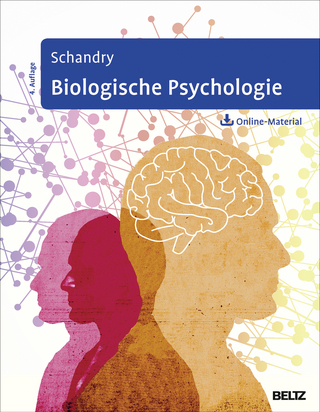
Handbook of the Behavioral Neurobiology of Serotonin
Academic Press Inc.(London) Ltd (Verlag)
978-0-444-64125-0 (ISBN)
Serotonin is a major neurotransmitters in the serotonergic system which one of the best studied and understood transmitter systems. Both are critically involved in the organization of all behaviors and in the regulation of emotion and mood.
Dr. Müller is Professor of Addiction Medicine at the Friedrich-Alexander-University Erlangen-Nuremberg, Germany. He obtained his PhD in Psychology from the University of Düsseldorf. He did PostDocs at the University of Syracuse (USA), University of Düsseldorf, and University of Brasilia (Brazil) before becoming a Senior Lecturer at the Institute of Psychiatry, King’s College London, UK. In 2010 he joined the Friedrich-Alexander-University of Erlangen-Nuremberg, Germany. He serves on several journal editorial boards and guest edited special issues of Behavioral Brain Research and Brain Research Bulletin. Dr. Müller has published more than 120 scientific papers and book chapters. Kathryn A. Cunningham is a pharmacologist and neuroscientist with a focus on advancing the biological understanding of psychiatric disorders and developing effective and safe therapeutics to maximize human function. Her cross-disciplinary, translational research efforts with chemists, cell biologists and clinical scientists are focused on pinpointing the critical roles of two serotonin proteins (5-HT2A and 5-HT2C receptors) in substance use disorder and the discovery of novel medications to extend abstinence. Her research has been funded continuously for 26 years, has led to three patents for new chemical entities and over 150 publications. Her research and educational contributions have been recognized by the American Society for Pharmacology and Experimental Therapeutics-Astellas Award for Translational Pharmacology and the Marian Fischman Memorial Award and the Mentorship Award from the College on Problems of Drug Dependence. Dr. Cunningham is the author of nearly 150 scientific publications and is currently Associate Editor of ACS Chemical Neuroscience and of Nature Neuropsychopharmacology.
Section 1: Functional anatomy of the serotonergic system 1.1 Evolution of serotonin: sunlight to suicide 1.2 From B1 to B9: a guide through hindbrain serotonin neurons with additional views from multidimensional characterization 1.3 Serotonin System Function, Organization and Feedback 1.4 Ultrastructure of the serotonin innervation in mammalian central nervous system 1.5 Classification and Signaling Characteristics of 5-HT Receptors: Towards the Concept of 5-HT Receptosomes 1.6 Distribution of 5-HT receptors in the central nervous system: An update 1.7 The serotonin2B receptor and neurochemical regulation in the brain 1.8 Electrochemical Detection of Serotonin Release in Rodents 1.9 Molecular neuroimaging of the serotonergic system with Positron Emission Tomography
Section 2: The neurophysiology of serotonin 2.1 Serotonergic control of excitability: from neuron to networks 2.2 Structure and function of serotonin GPCR heteromers 2.3 Tryptophan hydroxylase and serotonin synthesis regulation 2.4 Serotonylation and neuronal function 2.5 The effects of serotonin degradation on psychopathology: Role of monoamine oxidase 2.6 Cellular effects of serotonin in the CNS 2.7 Serotonin - lipid interactions and their role in behavior 2.8 Serotonin – Pain Modulation 2.9 Serotonin regulation of striatal function 2.10 Serotonergic regulation of hippocampal rhythmical activity 2.11 The loudness dependence of auditory evoked potentials as an electrophysiological marker of central serotonergic neurotransmission: implications for clinical psychiatry and psychopharmacotherapy
Section 3: Serotonin and systemic control 3.1 5-HT neurons and central CO2 chemoreception 3.2 Serotonin: a forgotten signal from the blood
Section 4: Serotonin and behavioural control 4.1 Serotonin and development 4.2 Roles of serotonin in the fetal brain 4.3 Serotonin and sensory processing 4.4 Serotonin and basal sensory–motor control 4.5 Role of the serotonergic system in appetite and ingestion control 4.6 Serotonin in eating behavior 4.7 Serotonin and the neurobiology of anxious states 4.8 Dorsal raphe serotonergic neurons regulate behavior on multiple timescales 4.9 The role of central serotonin in impulsivity, compulsivity and decision-making: Comparative studies in experimental animals and humans 4.10 The role of serotonin in learning and memory: a rich pallet of experimental studies 4.11 The role of serotonin in performance monitoring and cognitive control 4.12 Serotonin and 5-HT2B receptors in microglia control of behavior 4.13 The serotonin-free brain: behavioural consequences of Tph2 deficiency in animal models
Section 5: Serotonin in psychiatric disorders 5.1 Serotonin in panic and anxiety disorders 5.2 Serotonin and aggression – An update 5.3 Revisiting the Behavioral Genetics of Serotonin: Relevance to Anxiety and Depression 5.4 Serotonin and schizophrenia 5.5 Serotonin neurobiology in cocaine use disorder 5.6 The role of serotonin in alcohol use and abuse 5.7 The role of serotonin in nicotine abuse and addiction 5.8 Serotonin and serotonin receptors in hallucinogen action 5.9 The serotonergic system in obsessive compulsive disorder 5.10 Peripheral and central serotonin in the regulation of glucose metabolism 5.11 The role of serotonin in cortical development: implications for Autism Spectrum Disorder 5.12 Genetic, epigenetic, and environmental factors in serotonin associated disease conditions 5.13 Functional pharmacogenetics of serotonin receptors in psychiatric drug action 5.14 Classic psychedelics as therapeutics for psychiatric disorders
Section 6: Serotonin in neurological disorders 6.1 Serotonin in Parkinson's disease 6.2 Serotonin in seizures and epilepsy: a neurodevelopmental perspective 6.3 Serotonin and stroke
| Erscheinungsdatum | 25.01.2020 |
|---|---|
| Reihe/Serie | Handbook of Behavioral Neuroscience |
| Verlagsort | London |
| Sprache | englisch |
| Maße | 216 x 276 mm |
| Gewicht | 3030 g |
| Themenwelt | Geisteswissenschaften ► Psychologie ► Biopsychologie / Neurowissenschaften |
| Naturwissenschaften ► Biologie ► Humanbiologie | |
| Naturwissenschaften ► Biologie ► Zoologie | |
| ISBN-10 | 0-444-64125-4 / 0444641254 |
| ISBN-13 | 978-0-444-64125-0 / 9780444641250 |
| Zustand | Neuware |
| Haben Sie eine Frage zum Produkt? |
aus dem Bereich


